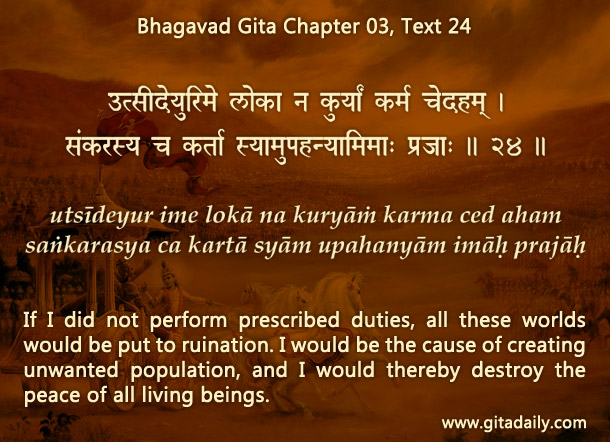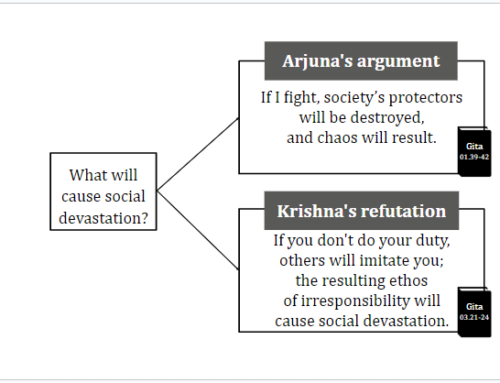Many people feel uncomfortable with the idea of a religious book, the Bhagavad-gita, urging war. They would probably be surprised to find their feelings echoed in that book itself – and with much more far-sightedness than a visceral revulsion to bloodshed.
In the Gita’s first chapter (01.38, 01.39), the warrior-prince Arjuna outlines the large-scale social destabilization that war causes. It kills the able-bodied and leaves the weaker sections of society such as women unprotected, prone to exploitation by unprincipled opportunists. As abortion is out of question in any civilized culture, such exploitation also fills society with unwanted progeny. Giving several such reasons, Arjuna declares (01.45) that it would be better to die unarmed and unresisting than to fight and cause such chaos.
Responding to this concern, Krishna explains how similar social upheavals (03.24) would result to a worse degree if the leaders of society abdicated their duty to protect in the name of pacifism. They would allow exploitative and violent anti-social elements to grab power and take on the position of leaders. When predators take on the positions of protectors, they would misappropriate the whole state machinery to exploit people.
That’s why, using the example of how he himself performs social duties diligently (03.23), Krishna urges Arjuna to act responsibly in his position as a leader of society. Responsible state leaders need to avoid violence as much as possible, as the Pandavas had done. But the purpose of peace is to promote civic order and spiritual progress in society – something almost impossible with exploiters at the helm.
If leaders in their pursuit of peace lose sight of its purpose, they end up harming society far more than any war might. When the only way to fulfill that purpose is war, the Gita doesn’t flinch from realism for the sake of pacifism.



Hare krishna!
It is very important to act in such a way that it will set forth good example for younger generation and over all establish good religious path leading to bhaktiyoga and liberation.